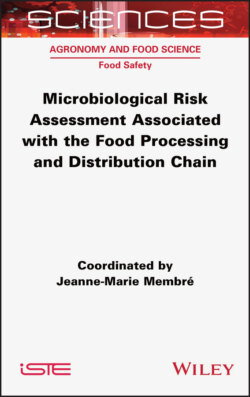Читать книгу Microbiological Risk Assessment Associated with the Food Processing and Distribution Chain - Jeanne-Marie Membre - Страница 17
Microbiological risk assessment
ОглавлениеThe purpose of microbiological risk assessment is to characterize the nature and probability of harm resulting from human exposure to the biological agents present in foodstuffs. Ever since 1999, the WHO and the FAO, through the Codex Alimentarius Commission (CAC), have set out principles and guidelines for conducting microbiological risk assessment of food (Codex Alimentarius Commission 1999). Since then, they have regularly augmented their work; for example, in 2020 they produced a very comprehensive methodological document (FAO and WHO 2020).
Microbiological risk assessment of food is a scientific process comprising four elements (Figure I.3): hazard identification, hazard characterization, exposure assessment and finally risk characterization. In the context of production, distribution and consumption of food products, the risks must take into account all stages of the chain: from the production of raw materials (“farm”) to consumption (“fork”), and even through to ingestion (“human”). Microbiological risk assessment thus covers the “farm-to-fork-to-human” continuum. Of course, depending on the food product, its composition, its manufacture and its packaging, the key steps to be taken into account in the risk assessment can be mostly upstream or mostly downstream of this continuum.
In 2000, the WHO and the FAO assembled a group of experts on the subject of microbiological risk assessment: JEMRA. JEMRA aims to develop and optimize the utility of microbiological risk assessment as a tool informing actions and decisions in order to improve food safety and make it available to developed and developing countries (FAO 2020). We strongly recommend the reader follow the work carried out by JEMRA and also consult on a regular basis the WHO and FAO websites dedicated to food safety and microbiological risk assessment.
Figure I.3. Microbiological risk assessment. Adapted from the FAO and WHO (2020)
The first chapter of this book deals with the first stage of microbiological risk assessment, namely hazard identification. It remains fairly general since the first book in this series is dedicated to hazard analysis (Haddad 2022). The other three stages of microbiological risk assessment, namely hazard characterization, exposure assessment and finally risk characterization, are, however, developed in the various chapters of this book. More specifically, in order to address the biological and mathematical aspects of these steps, hazard characterization and exposure assessment have each been divided into two parts: hazard characterization is subdivided into a pathogenicity mechanism and quantification of the dose–response; exposure assessment is subdivided into methods of detection and enumeration of pathogens and quantification of the level of exposure.
